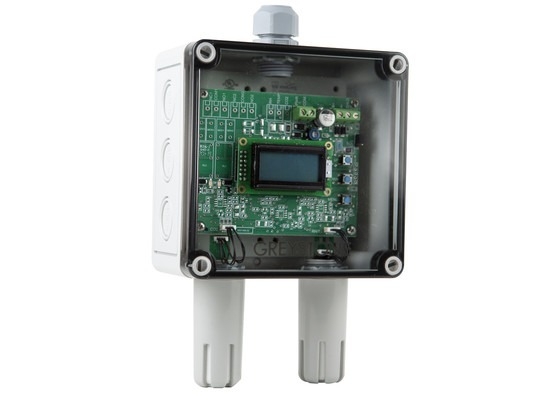CO2 Sensor Discrepancy & Proper Handheld Confirmation
By Madison Denardo - October 15, 2021
Enriching your indoor crops with CO2 is an incredibly powerful strategy that will increase your yield up to 40%. But when sensors alarm, this can also be one of more stressful elements within a grow. Quite often misunderstanding compounds this stress and creates more problems than solutions.
Universal CO2 specializes in the systems that deliver and monitor CO2 safely and accurately.
Understanding why your system is alarming and how to fix it has two components: Sensor Calibration and Multisensor Situations.
Sensor Calibration
Proper sensor calibration is at the heart of what makes a good system operate well. Navigating through all the sensor options out in the world can be daunting. Here are a few tips to help ensure you’re purchasing the right sensors for your needs.
-
Are the sensors designed for industrial applications? Quite often typical residential or commercial sensors are sold to unwitting customers. What may work well in an office building will not necessarily work well in an indoor grow environment. Sensors designed for indoor grow environments often have multiple infrared sensors that verify it’s accuracy over time as the sensor may degrade. Residential and commercial grade sensors typically do not have this capability.
-
Are they water resistant/proof? Moisture is the CO2 sensor’s biggest culprit for sensor malfunction. If humidity gets too high, or condensation drips into the sensor, or your staff unwittingly sprays water on a sensor, the sensor will malfunction and cause the system to alarm or behave erratically.
-
Are the sensors calibrated by ambient factors or through calibration span gasses? If your sensors are calibrated with outdoor air and automatically calibrate, this is a recipe for confusion, frustration, and poor crop growth.
Let’s discuss sensor calibration further. There are basically two types of calibration: Single Point and Multi Point calibrations. Single point calibrations are problematic because it uses an automatic calibration process based on outdoor air. Most people think that this is a good starting point but it’s not because you cannot verify what CO2 ppm is in the air. Whether your facility is next to a highway or out in the countryside, the outside air will calibrate very differently. Thus, giving your ppm calculations an unknown starting point.
Multi point calibration, like those used by Universal Controls, uses four levels of verified reference gasses. This not only gives us a verified start point but also confirms the accuracy of the sensors through its entire sensing range. Most often, auto calibrating sensors don’t perform to its full capacity let alone perform with accuracy. Universal’s multi point calibration confirms the sensor’s accuracy throughout the full range of performance.
Single Point (Auto) Calibration
Multi Point Calibration
Multi Sensor Situations
Typically more data is always desirable. At times we will receive calls from clients distressed because our sensors are reading different levels than the third party sensors they installed themselves and those are reading differently from the handheld device they are using to attempt to verify one or the other.
More sensors does not mean better data. Be mindful which sensors you put in your grow to prevent confusion, frustration, and poor system performance. The common misconception is that the system isn’t working properly when in actuality, the self calibrating sensors have increased the amount of CO2 you're putting into the system. Many will self-calibrate every 24 hours and determine the lowest value seen in that time span to be “400 ppm”.
This single sensor situation is very important when it pertains to handheld CO2 monitors. High quality and accurate handheld sensors can have up to 13 calibration points to ensure accuracy. If your handheld sensor auto calibrates with outside air it will not be able to accurately measure the enriched air of your facility.
At the end of the day a sensor’s true accuracy can only be known by testing it against a calibration gas with a known CO2 concentration.
